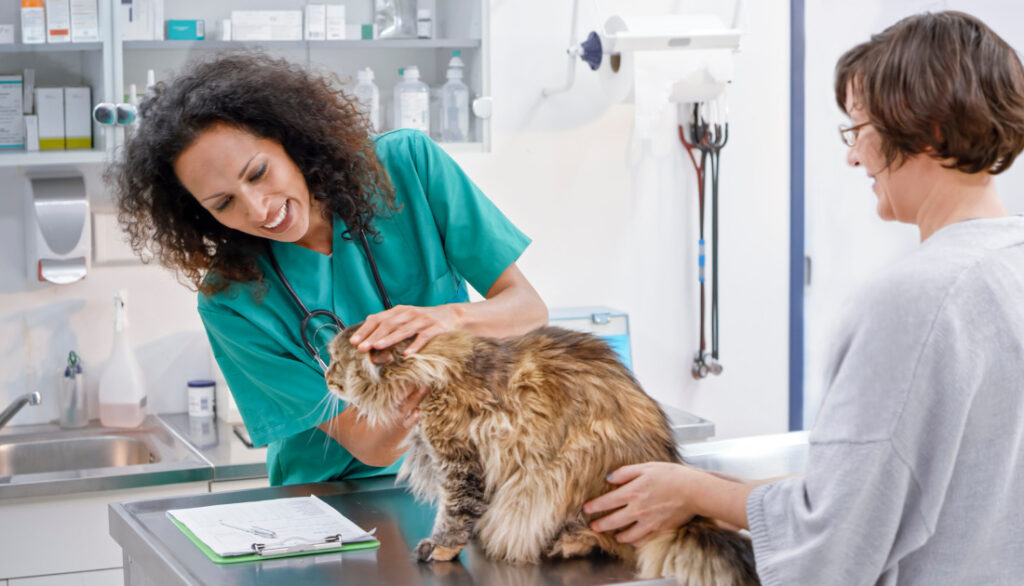Veterinarians have a unique financial lifecycle. With significant debt from veterinary school and the potential for low pay in residency, there are many factors that affect the financial health of veterinarians and veterinarians-in-training.
Understanding what is ahead and finding solutions for any challenges will allow you to navigate the road ahead with confidence. We share what you need to know about managing expenses in residency, student loan debt, job outlook and salary below.
Navigating financial challenges in residency
Though residency isn’t required for veterinarians, many veterinary school graduates elect to participate in a residency as a way to further their education and become board certified in a specific area.
Veterinarians who do not pursue residency will immediately be rewarded with a sizable salary after years of making ends meet in school. Those who opt to continue their education will be stuck with a lower salary for several years but will likely have a higher paycheck post-residency because of their additional training.
Completing a residency will likely be financially beneficial in the long run, but you may face financial difficulties because of the low paychecks and high debt load.
So, how do you manage these financial challenges during this time? Here are some tips.
A budget is your greatest tool
Creating a budget can give you greater control over your money and keeps you focused on your financial goals. Though it can take time to set up, creating a budget that can guide you throughout your training will reduce your stress over time.
Use a budgeting app like Mint, You Need a Budget, or Tiller Money to simplify the process. These tools will import your information and help you identify and categorize your income and expenses. Balance your budget to determine if you need to reduce spending in a certain area. Finally, automate your bills and savings to give you one less thing to worry about.
How to cover expenses
Even with a well-thought-out budget, you may not be able to cover the many expenses that arise during training. If you are struggling to pay rent, cover moving expenses or afford general spending, options to help you manage these expenses include:
- Credit cards – Credit cards are one of the quickest and easiest ways to obtain extra funds, but they can quickly lead to even greater financial stress due to high interest rates if you are not able to pay off the balance each month.
- Friends & family – Borrowing money from friends and family allows you to avoid the exorbitant interest rates of credit cards, but many do not have the luxury of this option. Also for some, it can create a potentially awkward situation or dynamic.
- Moonlighting – Working a second job can give you extra money without becoming indebted to a person or organization, but you can easily become spread too thin, potentially hurting your training and health. But there are trainees who are able to balance this, and it provides a nice cushion.
- Personal loans – Personal loans are another option for covering expenses, but they can be difficult to obtain due to high debt and limited credit history.
How personal loans can help veterinary residents
Traditional banks can make obtaining a personal loan difficult, but there are solutions specifically made for veterinarians. Panacea Financial’s PRN Personal Loan works to reduce these common roadblocks to financing. With no cosigner and low, fixed interest rates, we can help you make your way through residency and avoid high-interest credit cards to get by.
Student Debt
What is the average veterinary student debt?
According to the American Veterinary Medical Association, vet school students graduate with an average of $183,302 in debt, based on 2019 graduates. This is lower than the average medical and dental school debt — $201,490 and $292,169 respectively.
What percentage of veterinary students graduate with debt?
According to the AVMA, 83 percent of veterinarians take on student debt in pursuit of their education.
Managing veterinary student loan debt
The burden of veterinary student loan debt can persist for many years, if not a decade or more, after graduation. In “Should I refinance my student loans?,” we breakdown what you need to know about your options for managing your loans, but we will share the highlights here.
Public Service Loan Forgiveness
Public Service Loan Forgiveness offers significant financial benefits to those employed full time by non-profit and government entities for 10 years. This option is great for those already working or planning to work in these sectors, but individuals may be held back by being unable to obtain a job with a qualified employer in their field or desired location. Additionally, some may be able to overcome their debt quicker by working a higher-paying job.
Income-Driven Repayment
Income-driven repayment plans allow borrowers to repay their debt based on income level. They can offer some debt forgiveness at the end of the repayment period. Changes are coming to this program, so review how this may affect you here.
Student loan refinancing
If neither of the above seem like good options, refinancing your student loans could help you get on track to reducing — and eventually eliminating — your debt balance. It is important to note, both PSLF and IDR only deal with federal loans, but refinancing can be used for both federal and private loans.
Refinancing may be a good option when you want a lower interest rate, to change the repayment terms, or to reduce your number of monthly payments. Find our full guide to student loan refinancing here.
Job Outlook
Is the veterinary profession growing or shrinking?
According to the Bureau of Labor Statistics, the veterinary profession is expected to grow by 19 percent from 2021 to 2031. This is almost four times more than the expectation for all other professions and over double that of healthcare diagnosing or treating practitioners. The agency predicts about 4,800 job openings each year.
This growth will be driven by increased pet spending, an aging pet population and expanding treatment options.
What states employ the most and least veterinarians?
The states with the most employed veterinarians are California with 7,600, Texas with 5,400, and Florida with 4,790. The states with the least employed veterinarians are Wyoming with 200, Alaska with 220, and Rhode Island with 250.
Salary
What is the average veterinarian salary?
According to the Bureau of Labor Statistics, the average veterinarian salary in 2023 was $119,100 annually. When broken down, this equates to $57.26 per hour. The lowest 10 percent earned less than $72,360, and the highest 10 percent earned more than $201,440.
Veterinarians in social advocacy organizations earn an annual average of $110,590, those in government organizations earn $104,420, and those in educational services earn $108,950.
What are the highest and lowest paying states for veterinarians?
The highest paying state/district is Massachusetts with a mean salary of $162,030. Next is California with an average salary of $158,610 and Hawaii at $157,770.
The lowest paying state/territory is Puerto Rico, with a mean wage of $94,060. Followed by Montana at $94,070 and Nebraska at $95,040.
Before you go…
Residency can be difficult, but we are here to help! Be prepared for the challenges ahead and ask for help when you need it!
If you need student loan refinancing or a personal loan, we have products that cater to you. For more information about relevant topics, visit our resources page or check out our curated list below:





